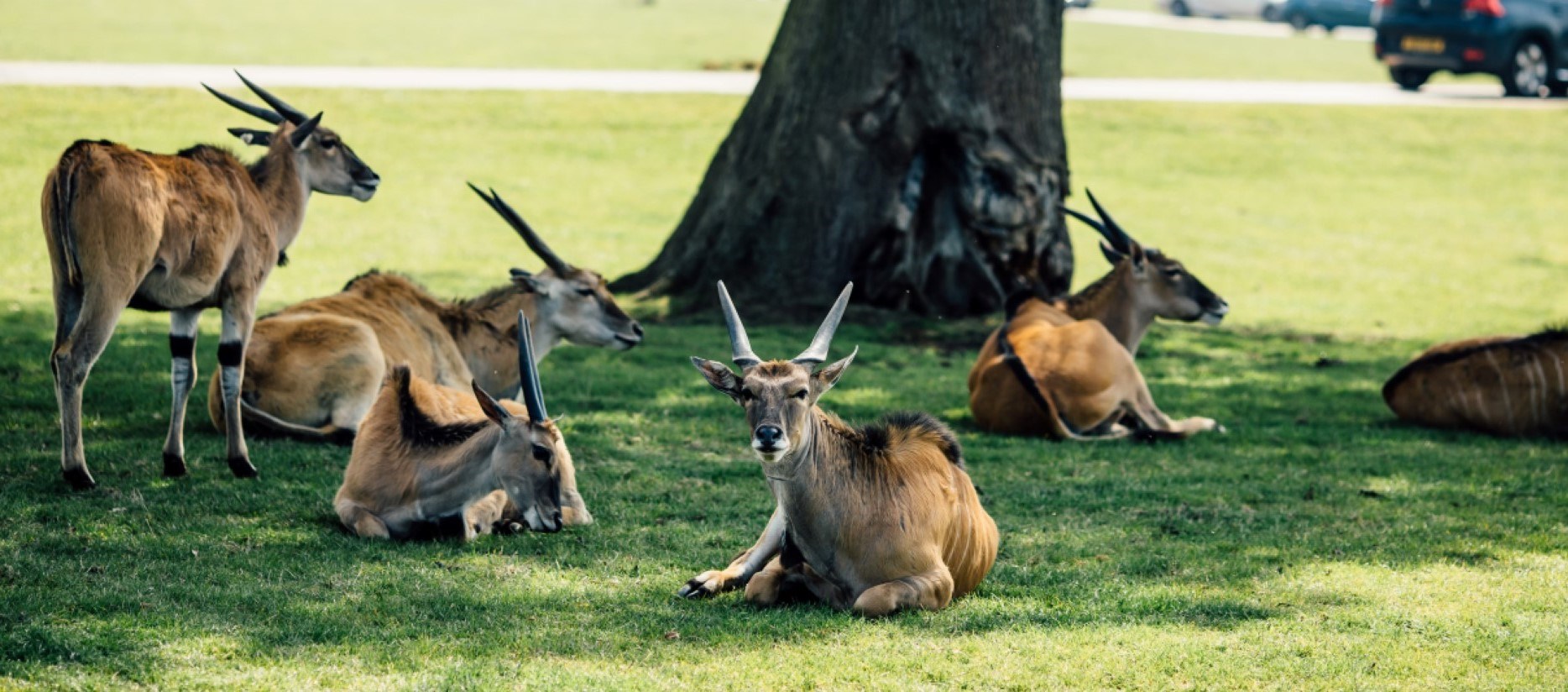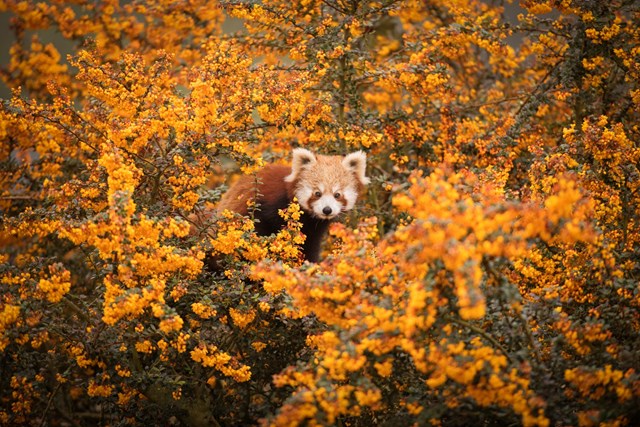Overview
The breeding herd of eland can be found grazing in the Road Safari's savannah reserve within a mixed exhibit with a variety of African species, including sable antelope and dwarf forest buffalo.

All about us
| Distribution: | East and South Africa |
|---|---|
| Habitat: | Savannahs, plains, sub desert, mountains |
| Height: | At the shoulder 125-183cm |
| Weight: | 350-900kg |
| Gestation Period: | 8-9 months |
| Lifespan: | 20-25 years |
| Threats: | Habitat loss due to human settlements. |
About us
Scientifc name: Taurotragus oryx
Eland are one of the largest antelope species and are found in East and South Africa on the plains and savannahs. However they are very adaptable and can form herds in a variety of habitats including sub-desert, floodplains and mountains.

Eland are predominantly fawn in colour and have several white stripes across their backs; they also have a short dark mane. Males can appear to turn blue/grey colour with age due to their dark skin showing through a thinning coat.
When walking, males produce a loud clicking noise. This is thought to be caused by the slipping of tendons over the knee joint or another foot bone. This sharp noise can travel for some distance and is a good indication of an approaching herd.
Both male and females have large spiralled horns. The male’s horns are shorter and thicker, whereas the female’s horns tend to be longer and have a tighter spiral.
Males will regularly rub their horns against objects and the ground to show their strength and ferocity. The females will use their horns to defend their calves against predators.
As the eland’s habitat is so versatile, so is its diet and includes grasses, seeds, leaves, fruits and herbs. Eland are herbivores and graze mainly on grasses. But they will also eat browse, seeds and fruits. Our eland are given hay and a concentrated pellet to ensure they remain in good condition all year round. In summer months our keepers gather browse that is tied up in the reserve for the herd to eat and enjoy.
Eland are non-territorial antelope and often form large herds; it is not uncommon to find a group of 100 individuals or more! However these groups are split into smaller separate herds of males, females and juveniles.
Male groups are usually the smallest and they stick together and search for food and water.
Female groups are much larger and they will cover a greater area. They tend to move into different habitats depending on the season. Within these groups there is a complex hierarchy usually consisting of a dominant female and several subordinates underneath her.
Juvenile groups are formed naturally when the females have given birth. The calves join up together and stay in these small nursery groups when the mother returns to feed with the rest of the females. They stay in these groups for two years and then join the appropriate male or female groups.
Females become sexually mature at approximately 2 years old. There isn’t a specific breeding season, however mating usually occurs after the rainy season, as this is when large groups gather on the fresh grassy plains. The male will chase the female and test her urine to see if she is in estrus (ready to mate). Females tend to choose the most dominant male to mate with, however other males will also be present and this causes fights. The males will use their horns to butt heads and wrestle with their rivals to win the breeding rights to the female.
The gestation period is 9 months and one calf is born. The mother is quite happy tucking the newborn calf away whilst she grazes as the calf has a natural instinct to remain still and hidden, so as not to be spotted by predators.
Eland are currently not listed as endangered and their population is considered to be stable. However numbers are gradually beginning to decrease to due habitat loss due to human settlements. They are also hunted for their meat and as the species are fairly inactive and docile they make an easy target.
Juveniles are in more danger of being attacked by predators such as lions, cheetahs and hyenas.

